If I misidentify one of these roots, I could die. But they are so delicious! And with elk and a weed salad, these fire-roasted wild roots are "to die for".

Step 1. Forage The Roots
The risky root that I am after is the Wild Carrot or Queen Anne's Lace (Daucus carota). Yes, it's the same plant that became our domestic carrot through lots of selection and cross-breeding over many generations. You may notice its pretty flowers in mid-summer, out in open fields. The roots are no good to eat then. But in the late winter and early spring, they are so delicious when they are roasted!
I'm not looking for the old plants that have flowered. Their roots are dead now. I'm looking for the plants that sprouted last fall and have been growing with every break in the winter weather. They will start putting up a flower stalk soon enough, and then the roots will be all woody and no good. But now, when their greenery is just little tufts in the grass? Now they are so crazy good!
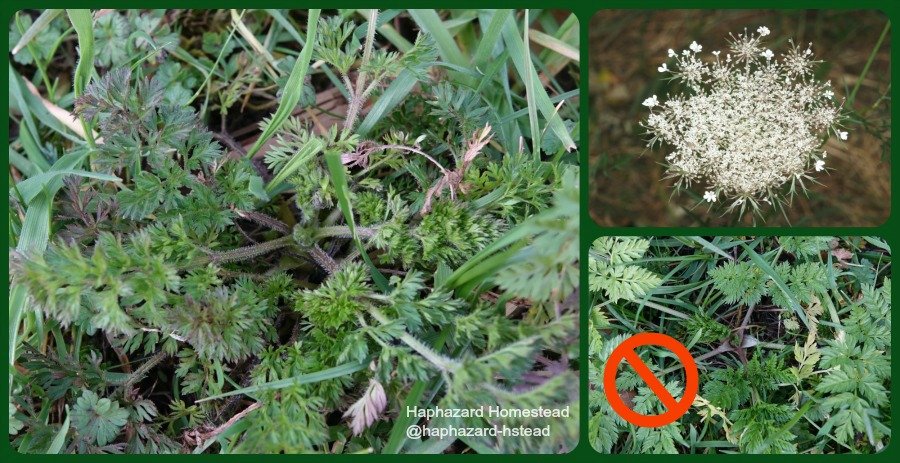
The big risk is to not get it confused with Poison Hemlock (Conium maculatum). Poison Hemlock is deadly, no exaggeration. This is serious business! Here at Haphazard Homestead, I have both of these plants. Sometimes they grow only a foot apart! But that's OK. Once you get to know them, though, they are easy to tell apart.
The Wild Carrot has little hairs on the stems of its leaves and it smells like a carrot. Poison Hemlock does not have any hairs, often has reddish-purple splotches on its leave stems, and it stinks! When the plants are older, they are even easier to tell apart, but that's fodder for a future post!
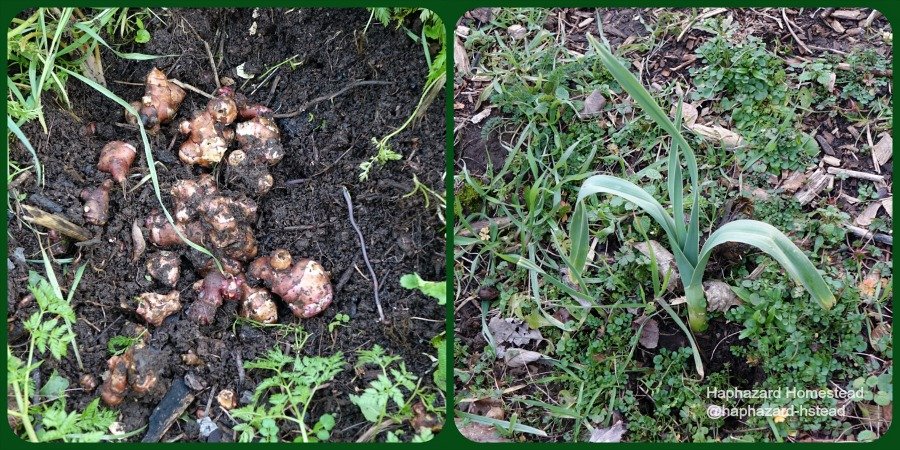
I'm also looking for two other roots that are great this time of year -- Jerusalem artichokes (Helianthus tuberosus) and Elephant Garlic (Allium ampeloprasum). Jerusalem artichokes are native to North America and grow in a lot of different places. Both plants often escape from gardens, too.
Once the roots are harvested -- DO NOT bring them into your kitchen with all that dirt on them. No! Soak them in a couple changes of water. You don't have to scrub, just soak and rinse. That's the voice of experience talking, with those big, bold letters!
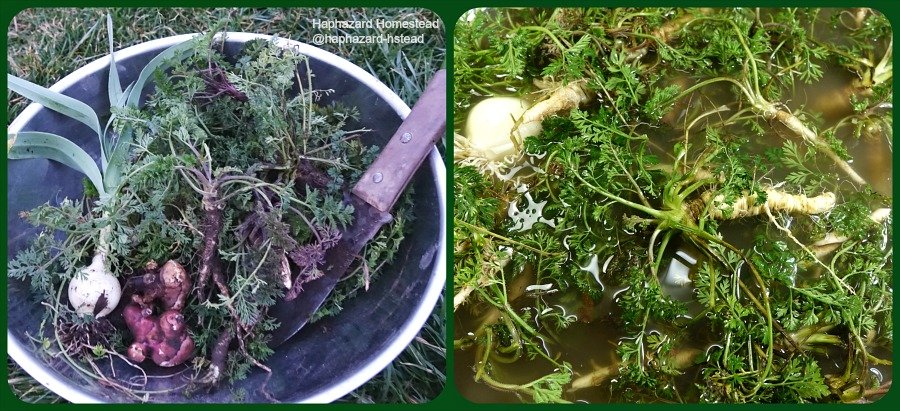
Step 2. Clean the Roots
I leave the tops on when I bring the wild carrots into the kitchen. This lets me double-check that I really have the right plants! I look at each one! Then I cut off their tops and scrub them better. But I don't have to scrub them too hard, because I peel them -- lightly. Wild carrots are really hairy compared to domestic carrots. My goal is to just knock off the hairs, not much more than that. They are not as fat as domestic carrots, so there's not a lot of root to spare!
I also slice the Elephant Garlic and Jeruslam artichokes. In the early spring, the Elephant Garlic is just one big bulb. It hasn't started splitting into cloves yet. I don't peel the Jerusalem artichokes. The peels are just fine to eat when they are roasted.
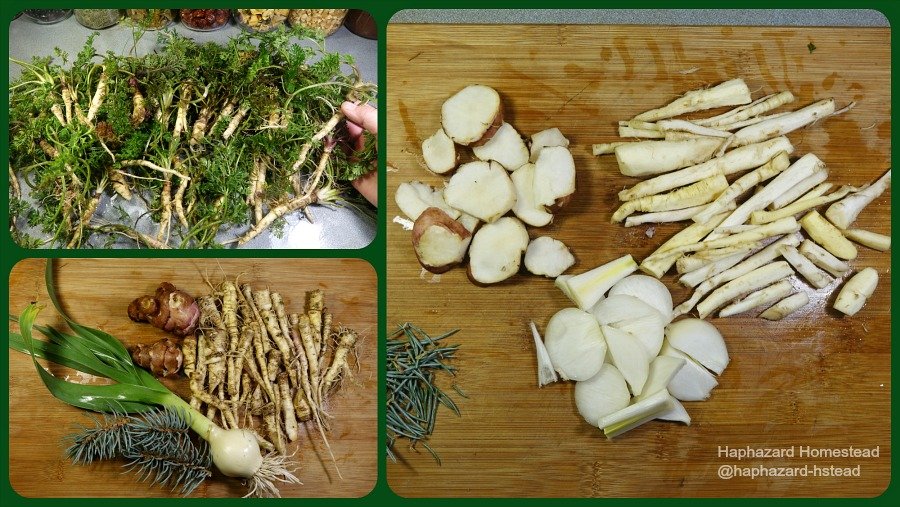
Step 3. Bag the Roots
I lay out some aluminum foil and put the roots on it. Then I put on a tablespoon or so of olive oil, and some salt and pepper. That's all. I wrap everything up into a tight packet, so nothing will leak out.
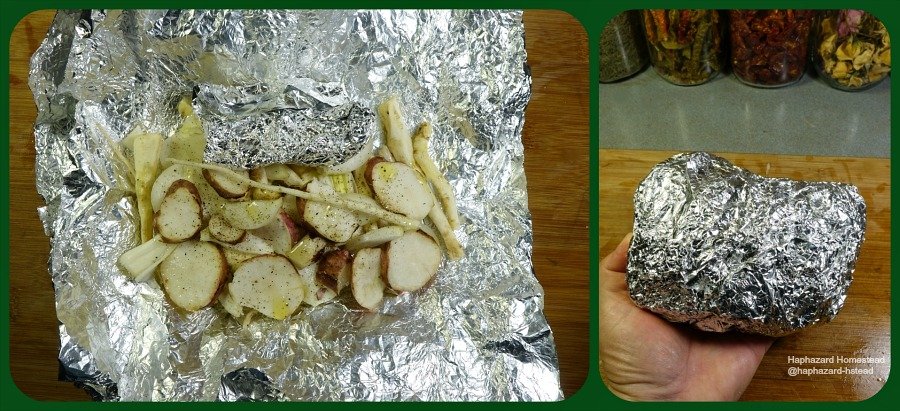
Ingredients: Roots from wild carrots, Jerusalem artichokes, Elephant garlic, olive oil, salt, pepper. Pretty simple!
Step 4. Roast the Roots
I built a fire and let it burn until I had a nice bed of coals. I laid my package of roots in the coals and even put some coals on top. Then I let it sit for about 15 minutes. I turned the packet over and put more coals on top. After another 15 minutes or so, it was ready. I opened the packet -- and there it all is. Everything is tender and sweet and delicious!
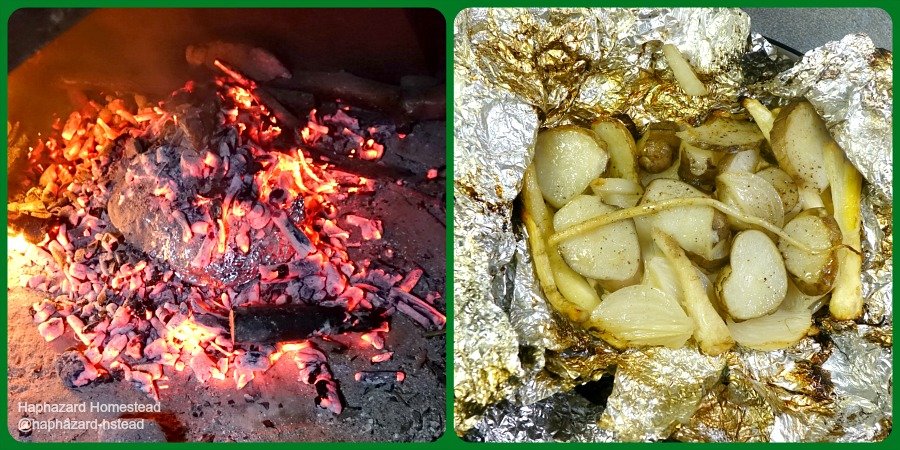
Step 5. Enjoy Eating Those Roots!
I served my Fire-roasted Wild Roots with a wild salad of Chickweed (Stellaria media) and Wild Field Mustard (Brassica rapa), and some leftover roasted elk that I made the day before the Culinary Challenge theme was announced! With a good Cream Ale to drink and a warm compote from homegrown Concord Grape I preserved in my freezer, this was a great meal!
Make no mistake, even though there was meat here, it is not the main course. The star of this plate is the Fire-Roasted Wild Roots. This could be served at any restaurant -- it is that good! The smoky flavor of the Jerusalem artichokes, the sweetness of the carrots, and the mild leek flavor of the Elephant garlic. So simple, so delicious! It is worth getting to know the Wild Carrot!
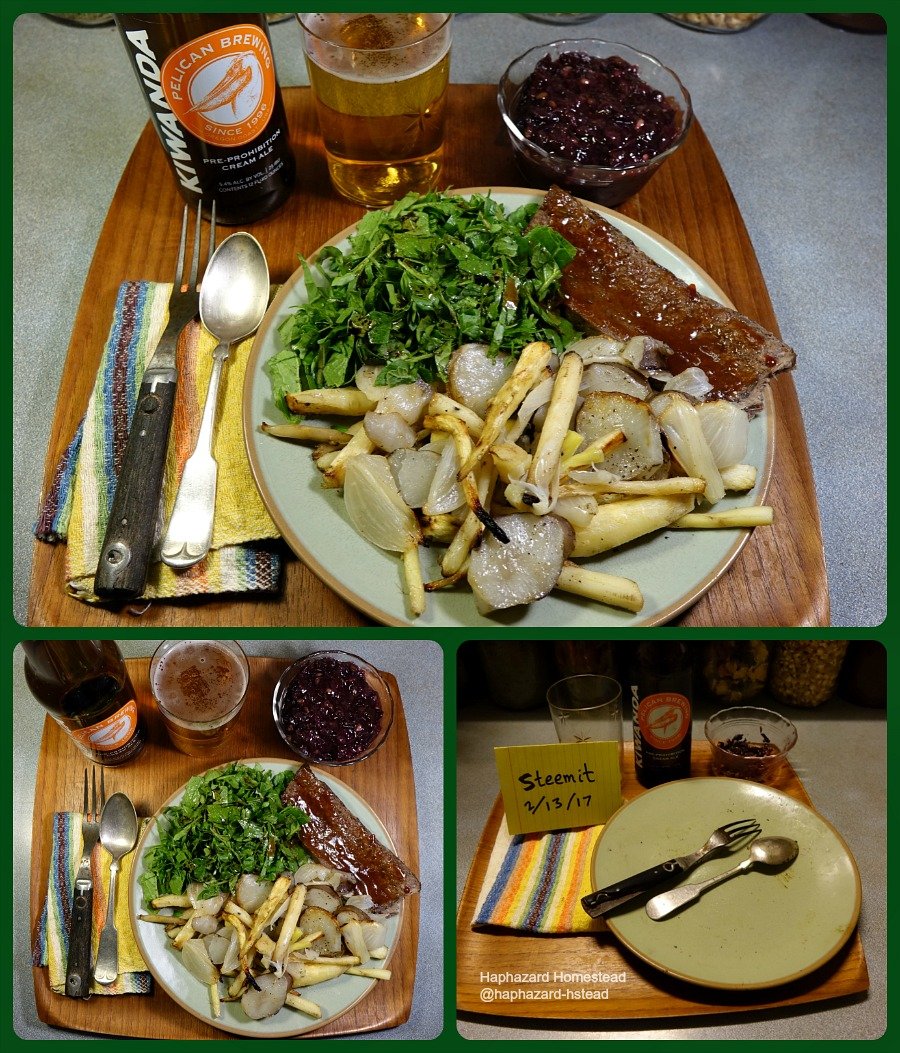
What Do You Think?
Have you ever seen Queen Anne's Lace out in the wild? Have you ever eaten their roots? Are you interested in trying to eat this great wild food? What are you foraging now? I really want to know!
I write about foraging because I believe that we can all have lives that are richer, more secure, more grounded, and more interesting by getting to know the plants and the land around us – in our yards, our parks, and our wilderness.
I would like Steemit to be the premier site for Foraging on the Internet! If you have any thoughts about foraging, or experiences to share, write a post and be sure to use the Foraging tag. And check out the @foraging-trail to see curated quality posts about foraging. Happy Foraging!
** Haphazard Homestead **
*** foraging, gardening, nature, simple living close to the land ***
All content is 100% Haphazard Homestead - photos and all!
I participate in Operation Translation. All my posts are available for translation under the rules listed on the linked post from @papa-pepper. Logo provided by @oepc85. Post goes 100% to Steem Power! Logo provided by @merej99

*** foraging, gardening, nature, simple living close to the land ***

